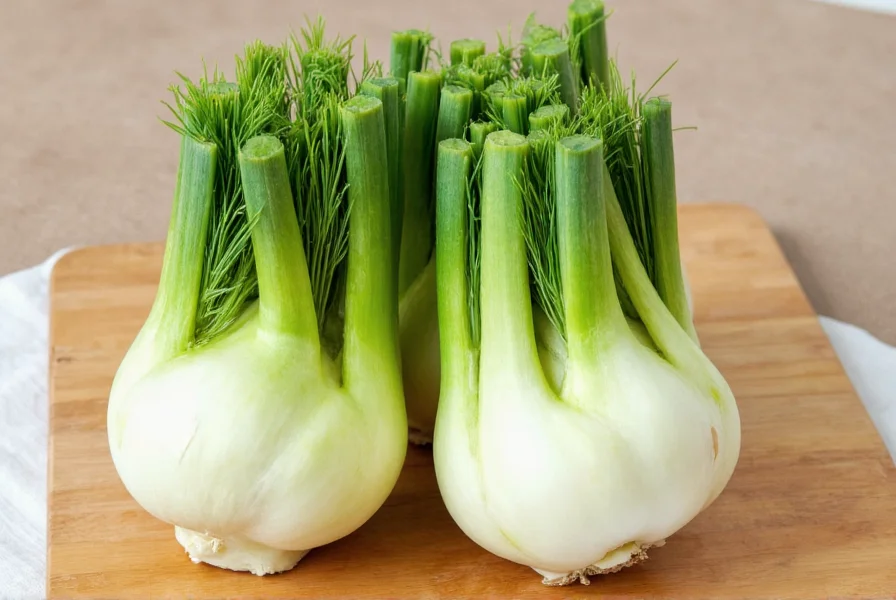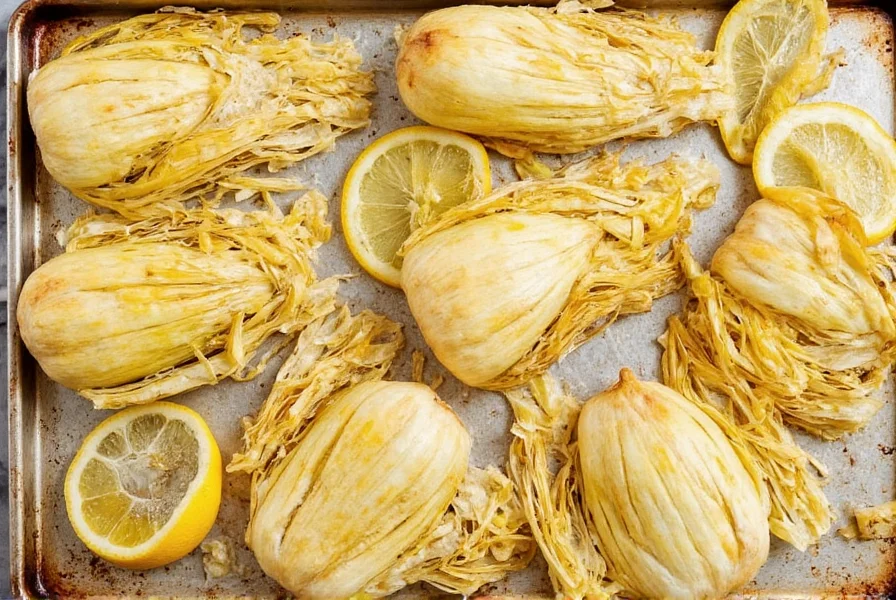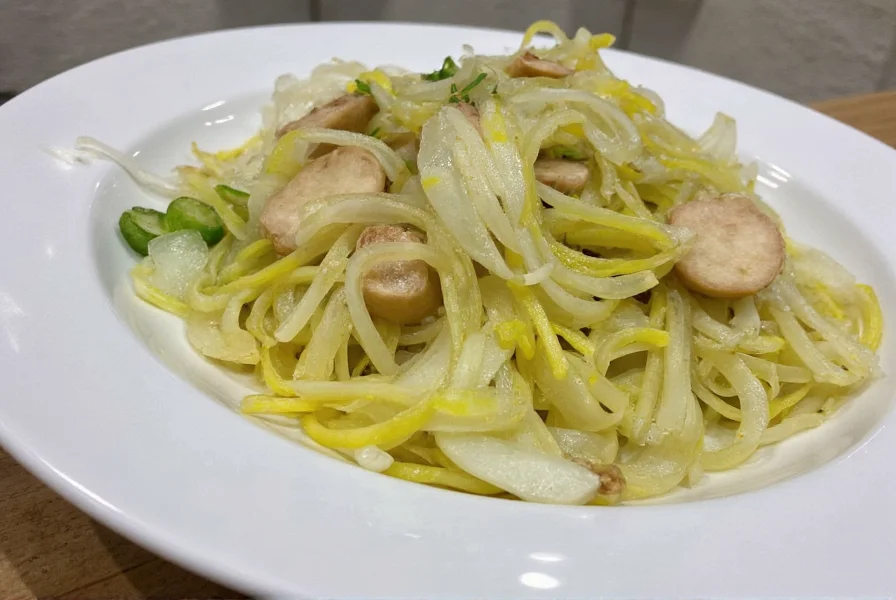Fennel bulb often sits forgotten in produce sections, misunderstood for its subtle licorice note. Yet this versatile vegetable deserves a regular spot in your cooking rotation. When selecting fennel bulb recipes, understanding its dual nature is key: raw fennel offers crisp texture and bright flavor, while cooked fennel develops rich sweetness. This guide explores the best approaches to cooking with fennel bulb, from simple preparations to more complex dishes that showcase its remarkable transformation through heat.
Understanding Fennel Bulb's Culinary Potential
Fennel bulb (Foeniculum vulgare) features a white, bulbous base with feathery green fronds. Its flavor profile contains natural anethole, the same compound found in anise and star anise, but in much more subtle concentrations. When raw, fennel bulb provides crisp texture and refreshing flavor; when cooked, it develops complex sweetness with caramelized edges. This vegetable contains significant vitamin C, potassium, and fiber, making it both nutritious and delicious.

Essential Preparation Techniques
Proper preparation maximizes fennel bulb's potential in your recipes with fennel bulb. Start by trimming the stalks about an inch above the bulb and removing any tough outer layers. Cut the bulb in half lengthwise, then remove the tough core with a small knife. For salads, slice thinly using a mandoline for consistent pieces. For roasting or braising, cut into wedges that maintain their structure during cooking. Don't discard the fronds—they work beautifully as a fresh herb in salads, garnishes, or compound butters.
Top Fennel Bulb Recipe Categories
Understanding which cooking methods best showcase fennel bulb helps you choose the right recipes with fennel bulb for your needs. The vegetable responds differently to various techniques, creating entirely new flavor profiles.
| Cooking Method | Best For | Flavor Transformation | Recommended Pairings |
|---|---|---|---|
| Raw | Salads, slaws, crudités | Crisp, refreshing, slightly sweet | Citrus, apple, walnuts, light vinaigrettes |
| Roasting | Main dishes, side dishes | Caramelized, nutty, sweet | Olive oil, garlic, lemon, potatoes |
| Braising | Hearty side dishes, stews | Tender, mellow, complex | White wine, chicken stock, tomatoes |
| Sautéing | Quick side dishes, pasta additions | Softened, aromatic | Butter, shallots, herbs de Provence |
Must-Try Fennel Bulb Recipes
Fennel and Citrus Salad with Orange Vinaigrette
This refreshing fennel bulb salad recipes requires minimal cooking and highlights the vegetable's crisp texture. Thinly slice one fennel bulb using a mandoline, segment two oranges, and combine with sliced red onion. Whisk together orange juice, olive oil, Dijon mustard, and a touch of honey for the dressing. Toss gently and finish with fennel fronds and toasted pistachios. This easy fennel bulb recipe works as both a side dish or light lunch and showcases how to cook fennel bulb without heat.
Braised Fennel with White Wine and Herbs
For those wondering what to make with fennel bulb beyond salads, this braised preparation transforms it into a sophisticated side dish. Cut two fennel bulbs into quarters, sauté in olive oil until golden, then add ½ cup dry white wine, ¼ cup chicken or vegetable stock, and fresh thyme. Cover and simmer for 20-25 minutes until tender. Finish with lemon zest and butter for a restaurant-quality side that pairs beautifully with chicken or fish. This braised fennel bulb recipes demonstrates how cooking mellows fennel's anise flavor while enhancing its natural sweetness.

Roasted Fennel and Potato Medley
One of the most approachable roasted fennel bulb recipes combines cubed fennel with potatoes, carrots, and red onions. Toss with olive oil, minced garlic, rosemary, salt, and pepper, then roast at 400°F (200°C) for 35-40 minutes until caramelized and tender. The potatoes absorb fennel's flavor while mellowing its intensity, creating a crowd-pleasing side dish even fennel skeptics enjoy. This fennel bulb side dishes recipe proves how versatile this vegetable can be in everyday cooking.
Pro Tips for Perfect Fennel Bulb Dishes
Mastering fennel bulb cooking requires understanding a few key techniques. When roasting, cut pieces uniformly to ensure even cooking. For raw preparations, soak sliced fennel in ice water for 15-20 minutes to enhance crispness. To reduce the anise flavor for those sensitive to it, pair fennel with acidic ingredients like lemon or vinegar which balance its natural sweetness. When storing unused portions, wrap the bulb tightly in plastic and keep in the refrigerator crisper drawer for up to five days. The fronds stay fresh longer when placed in a glass of water and covered with a plastic bag.
Flavor Pairings That Shine with Fennel
Certain ingredients naturally complement fennel bulb's unique profile. Citrus—particularly orange and lemon—creates bright contrasts to fennel's earthiness. Olive oil enhances its natural richness, while garlic and shallots add savory depth. For herb pairings, dill, parsley, and tarragon work particularly well. In protein pairings, fennel complements fish (especially salmon and cod), chicken, pork, and lamb beautifully. For vegetarian preparations, it pairs wonderfully with beans, lentils, and other root vegetables.
Troubleshooting Common Fennel Cooking Challenges
Many home cooks encounter issues when preparing fennel bulb recipes for the first time. If your roasted fennel falls apart, you've likely cut the pieces too small or overcooked them—aim for 1½-inch wedges and check for tenderness starting at 30 minutes. For bitter raw preparations, try massaging sliced fennel with a bit of salt and lemon juice to mellow the flavor. If the anise note proves too strong, balance it with additional acid or pair with sweeter vegetables like carrots or beets. Remember that fennel's flavor intensifies as it cooks, so err on the side of under-seasoning initially.
Expanding Your Fennel Repertoire
Once comfortable with basic fennel bulb recipes, experiment with more creative applications. Try adding thinly sliced raw fennel to sandwiches for crunch, blending cooked fennel into creamy soups, or incorporating it into grain pilafs. Fennel pollen, the edible golden dust from fennel flowers, makes an exquisite finishing spice for finished dishes. For a unique appetizer, try fennel carpaccio—paper-thin slices arranged with citrus segments, olive oil, and sea salt. These advanced fennel bulb cooking tips help transform this humble vegetable into show-stopping dishes that impress guests while remaining approachable for weeknight meals.
What's the best way to cut fennel bulb for cooking?
To properly cut fennel bulb, first trim the stalks about an inch above the bulb and remove any tough outer layers. Cut the bulb in half lengthwise, then use a small knife to remove the tough core from each half. For salads, slice thinly using a mandoline for consistent pieces. For roasting or braising, cut into 1½-inch wedges that will maintain their structure during cooking. Always save the feathery fronds for use as a fresh herb in dressings or as garnish.
How can I reduce the licorice flavor in fennel bulb recipes?
To mellow fennel's natural anise flavor, try several approaches: pair it with acidic ingredients like lemon juice or vinegar which balance the sweetness, cook it thoroughly as heat transforms the flavor profile, or combine it with sweeter vegetables like carrots or beets. For raw preparations, soaking sliced fennel in ice water with a squeeze of lemon for 15-20 minutes helps reduce the intensity while maintaining crispness. Many people find that proper cooking techniques make fennel bulb appealing even to those who typically dislike licorice flavors.
Can I use all parts of the fennel plant in recipes?
Yes, the entire fennel plant is edible and useful in cooking. The bulb works as the main vegetable component in both raw and cooked preparations. The stalks can be used like celery in stocks and soups. The feathery fronds serve as a fresh herb similar to dill—chop them finely for salads, compound butters, or as a garnish. Even the seeds (which develop later in the plant's life cycle) work as a spice in sausages, breads, and spice blends. Using all parts reduces waste and creates cohesive flavor profiles throughout your dish.
How long does cooked fennel bulb keep in the refrigerator?
Properly stored cooked fennel bulb maintains quality for 3-4 days in the refrigerator. Place it in an airtight container after cooling completely. For best results, store the cooking liquid with the fennel to prevent drying out. When reheating, add a splash of water or broth and warm gently over medium-low heat. Raw fennel bulb keeps longer—up to 5 days when wrapped tightly in plastic and stored in the refrigerator crisper drawer. The fronds stay fresh for 3-4 days when placed in a glass of water and covered with a plastic bag.











 浙公网安备
33010002000092号
浙公网安备
33010002000092号 浙B2-20120091-4
浙B2-20120091-4